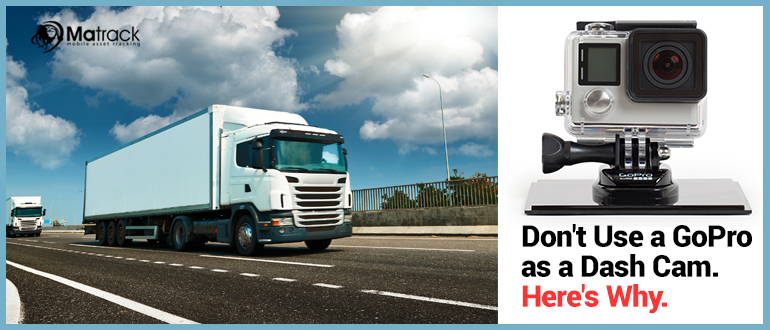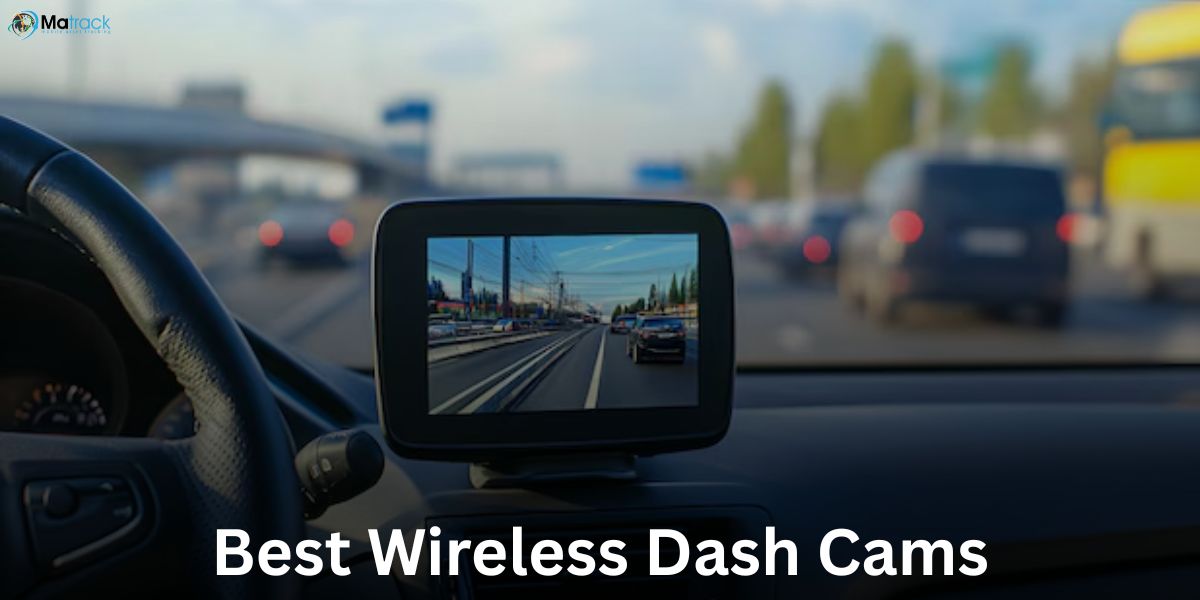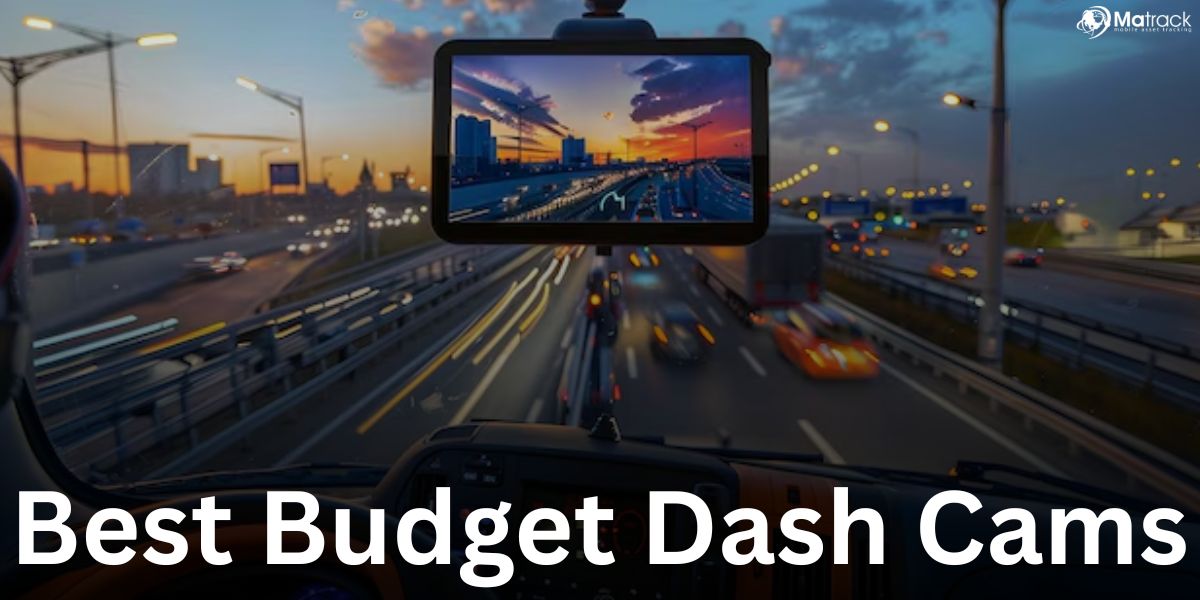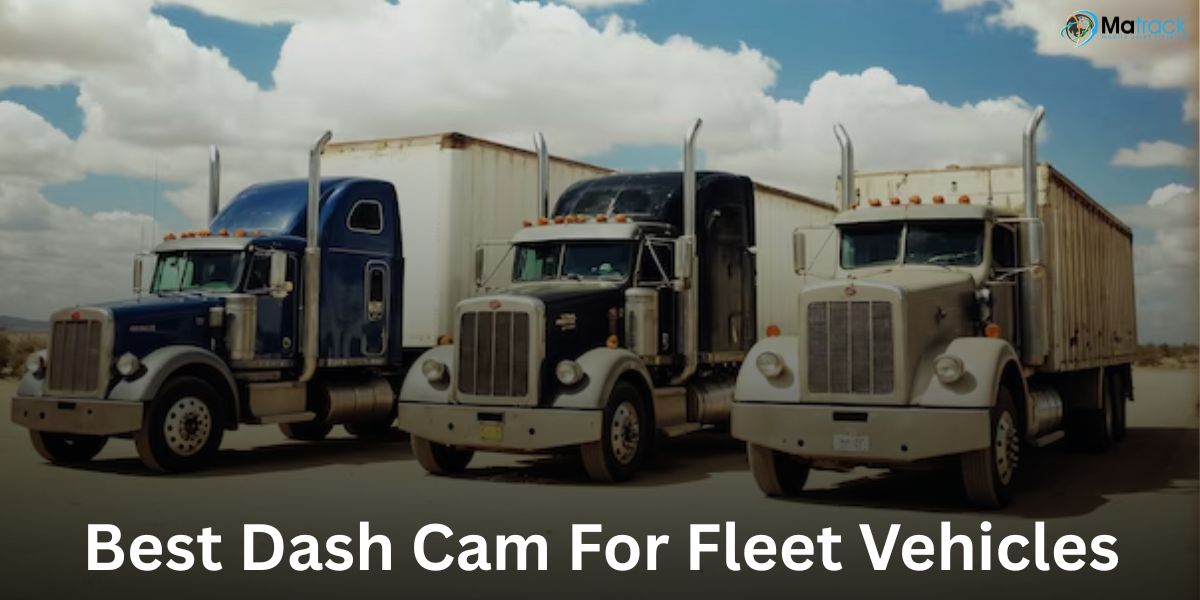Key Takeaways
- GoPro is not ideal as a dash cam because it lacks key features like automatic recording, G-sensors, and GPS, making it less practical.
- Using a GoPro as a dash cam requires manual setup, including mounting, powering, and enabling settings like loop recording.
- Dash cams are better for vehicles with features like parking mode, GPS tracking, and temperature resistance.
- Matrack Fleet Dash Cam offers advanced features like multi-camera support, driver alerts, and real-time monitoring.
What is a GoPro camera?
A GoPro camera is a small, durable, and waterproof camera designed to record high-quality videos during activities like sports and adventures.
What is a dash cam?
A dash cam is a camera installed in a vehicle to record video while driving, primarily for safety and legal purposes.
How can you use gopro as a dash cam?
Mount the GoPro Securely
Mount the GoPro securely using a suction cup or adhesive mount to fix it on your windshield or dashboard. Position it where it captures the road clearly but does not obstruct your driving view.
Mounting the camera correctly ensures it stays stable, even during bumps or sudden stops. An unstable mount can result in shaky footage, making it less useful in capturing important details.
Power the Camera
Power the camera by connecting it to a power bank with a USB cable for uninterrupted recording. The GoPro’s internal battery lasts only 1-2 hours, making an external power source essential for longer trips.
Using a power bank adds complexity, as you need to manage cables and ensure it is charged. Unlike dash cams, which integrate seamlessly with vehicle power, this setup is less practical for daily use.
Enable Loop Recording
Enable loop recording in the GoPro’s settings so that older videos are automatically overwritten when the memory card is full. This allows the camera to record continuously without requiring frequent manual file deletion.
Choosing a loop duration, such as 5 or 20 minutes, ensures that recent footage is preserved while managing storage space. However, this feature is limited compared to dash cams, which often save critical footage separately during events like accidents.
Adjust Video Settings
Adjust video settings to 1080p resolution for clear recordings that don’t consume excessive storage space. Set the field of view to wide to capture a larger portion of the road, including nearby lanes and roadside activity.
While the GoPro’s video quality is excellent, it may be overkill for a dash cam’s primary purpose of incident recording. Dash cams typically balance video clarity with optimized file sizes and simpler configurations.
Install a Large Memory Card
Install a large memory card, such as 64GB or higher, to store extended recordings. Use a high-speed card like Class 10 or UHS-I to handle continuous video recording without lag or errors.
A larger memory card reduces how often you need to transfer or delete files. However, dash cams often handle storage more efficiently with built-in features like event-specific file saving.
Start and Stop Recording Manually
Start and stop recording manually by pressing the record button at the beginning and end of each trip. This step is critical, as GoPros do not start recording automatically like most dash cams.
If manual operation is inconvenient, you can pair the GoPro with its app or a remote control for easier access. Still, this process is far less user-friendly compared to a dash cam’s automated recording functionality.
Protect Against Overheating
Protect against overheating by keeping the GoPro away from direct sunlight and positioning it near an air vent. Prolonged exposure to heat inside a car can cause the camera to shut down or become damaged.
Using a windshield sunshade can also help keep the car interior cooler during extended drives. Despite these precautions, GoPros are more prone to overheating than dash cams, which are built to withstand vehicle conditions.
Using GoPro as dash cam: Advantages
Compact Size
Compact size makes GoPro cameras easy to fit in your car without blocking your view. You can attach them to the dashboard or windshield and remove them quickly whenever needed.
Quality Recording
Quality recording is a major strength of GoPro, with models like Hero 7 and Hero 8 offering 4K video. The wide-angle lens captures more of the road, and video stabilization ensures clear footage even on bumpy roads.
Performance
Performance is another advantage, as GoPro cameras are durable and built for tough conditions. They can handle fast recording with frame rates up to 240 fps in FHD and 60 fps in 4K.
GoPro as dash cam: Disadvantages
Expensive
Expensive compared to dash cams, a basic GoPro costs about $399, while a good dash cam can cost as little as $100. Choosing a GoPro for this purpose means spending a lot more money than necessary.
Battery Life
Battery life is a problem with GoPros because they rely on a built-in battery that doesn’t last long. Dash cams are powered by your car, so they can keep recording as long as your car is on.
Automatic Recording
Automatic recording is a feature of dash cams—they start filming as soon as the car is turned on. With a GoPro, you have to turn it on manually, and forgetting to do so means missing important footage.
Lacking G-Sensor
Lacking a G-sensor, GoPros can’t detect accidents or sudden impacts. Dash cams use G-sensors to save important footage automatically during an event like a collision.
Intelligent Parking Mode
Intelligent Parking Mode is available in most dash cams and records movement or bumps when the car is parked. GoPros don’t have this feature, so they can’t protect your car when you’re not around.
GPS Tracking
GPS tracking is built into many dash cams to record your location and speed. Most GoPros don’t have this, so they can’t provide detailed information for insurance or legal purposes.
Cannot Withstand Extreme Temperatures
Cannot withstand extreme temperatures, GoPros can overheat in hot weather or fail to work in very cold conditions. Dash cams are designed to handle heat and cold, making them more dependable.
Theft
Theft is a bigger issue for GoPros because they are expensive and easy to sell. Constantly removing the camera to prevent theft is inconvenient compared to the less noticeable design of dash cams.
GoPro Hero 10 Vs Dashcam Comparison
| Aspect | Dashcam | GoPro Hero 10 Black |
|---|---|---|
| Purpose | Designed for recording while driving | Designed for a range of activities |
| Field of view | Wide-angle to capture as much of the road ahead as possible | Multiple lens options, including SuperView, Wide, and Linear |
| Mounting | Mounted on the dashboard or windshield of a car | Can be mounted on a variety of surfaces, including helmets, chests, and handlebars |
| Resolution | Varies by model, typically up to 4K | 5.3K at 60fps, 4K at 120fps |
| Frame rate | Varies by model, typically up to 60fps | Up to 240fps in 1080p, 120fps in 4K |
| Image stabilization | Basic electronic stabilization, some models have advanced stabilization | Advanced HyperSmooth 4.0 stabilization |
| Features | Basic features such as loop recording, G-sensor, and parking mode | Advanced features such as TimeWarp 3.0, SuperPhoto, and Night Lapse |
| Battery life | Designed to be plugged into a car’s power source and run continuously | Up to 140 minutes of continuous recording |
| Waterproof | Some models are waterproof, but not all | Waterproof up to 33 feet (10 meters) |
| Price range | $100 – $450+ |
$249 – $500+ |
Choose Matrack Fleet Dash Cam
Matrack’s fleet dash cam improves fleet safety and efficiency with advanced features. It uses AI technology and real-time monitoring to provide complete visibility of your vehicles.
This system helps prevent accidents by alerting drivers to risky behavior. Fleet managers can access valuable insights to improve safety and streamline operations.
Key Features of the Matrack Fleet Dash Cam
- Multi-Camera System: Supports up to 5 cameras to monitor the front, rear, sides, and inside of the vehicle. This gives full coverage and eliminates blind spots.
- GPS Tracking: Tracks vehicle location, ignition status, and driving patterns like hard braking. Helps improve route efficiency and reduce fuel costs.
- Driver Monitoring: Detects drowsy driving, texting, and other distractions. Alerts drivers instantly to encourage safer driving habits.
- Lane and Collision Alerts: Warns drivers about unsafe lane changes or possible collisions. Helps prevent accidents with real-time audio alerts.
- Video Access: Lets you view past recordings through an easy-to-use portal. Quickly resolve disputes and review incidents when needed.
- Live Streaming: Allows real-time video access from any camera. Gives immediate updates on driver activities and fleet operations.
- Parking Mode: Records any bumps or motion while the vehicle is parked. Keeps your fleet secure when drivers are not around.
- In-Cab Alerts: Notifies drivers of unsafe actions like tailgating or not wearing a seat belt. Helps drivers build safer habits and avoid risks.
Conclusion
GoPro cameras are excellent for sports and adventure activities but have many limitations when used as dash cams. Dash cams are specifically designed to protect drivers and vehicles, making them a better option for everyday use.
While GoPros may not replace dash cams anytime soon, their success in other fields shows potential. In the future, GoPro could develop professional dash cams that meet these needs.



